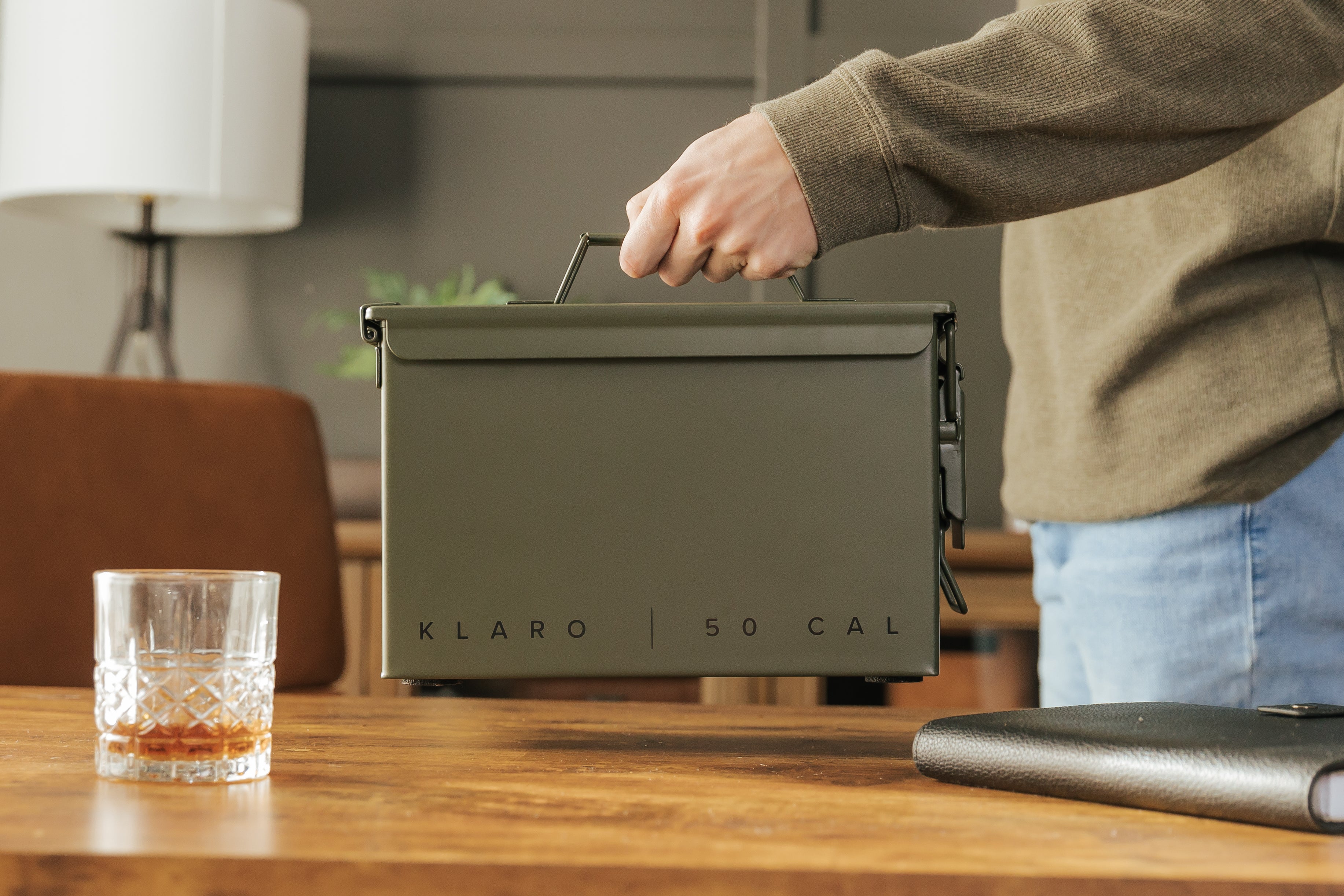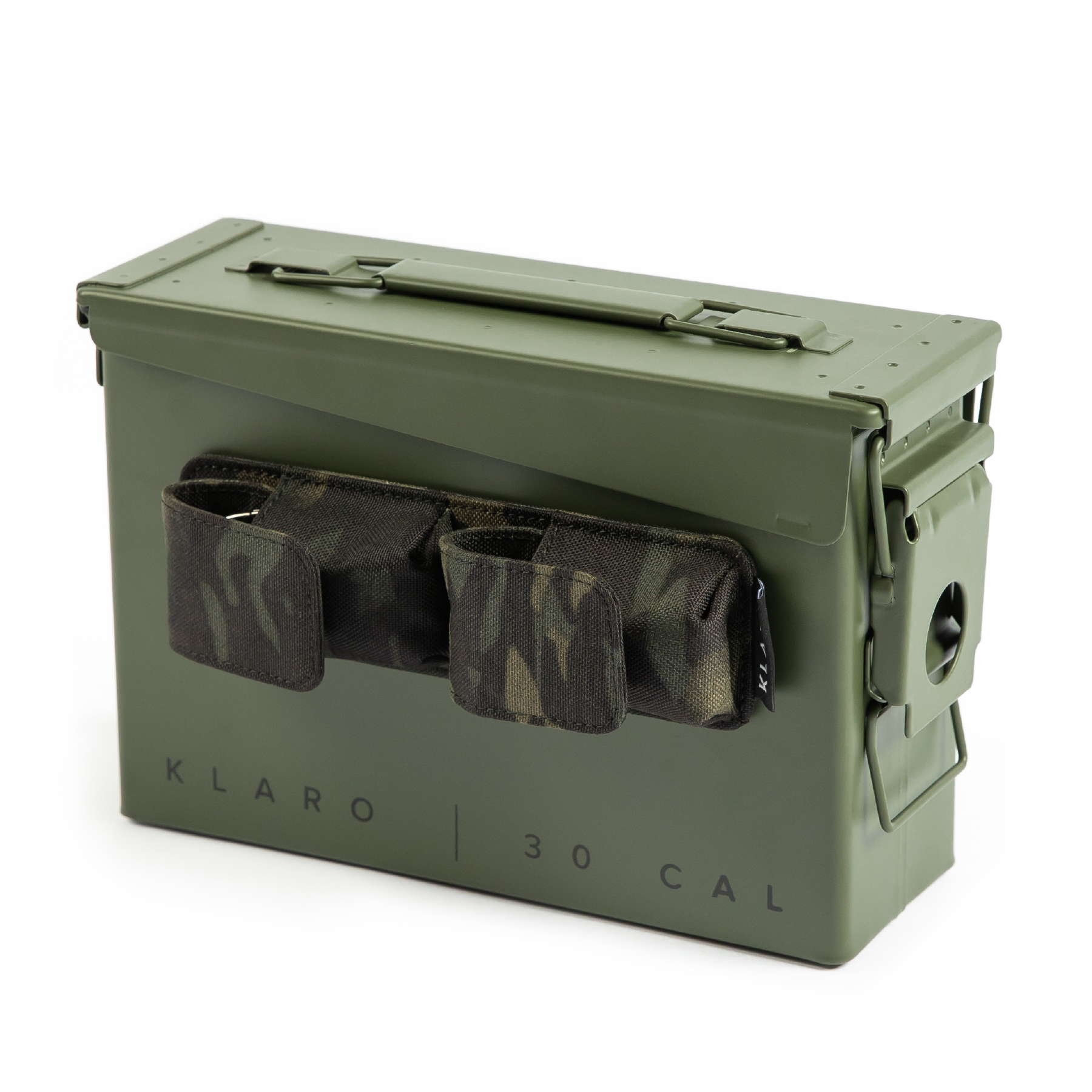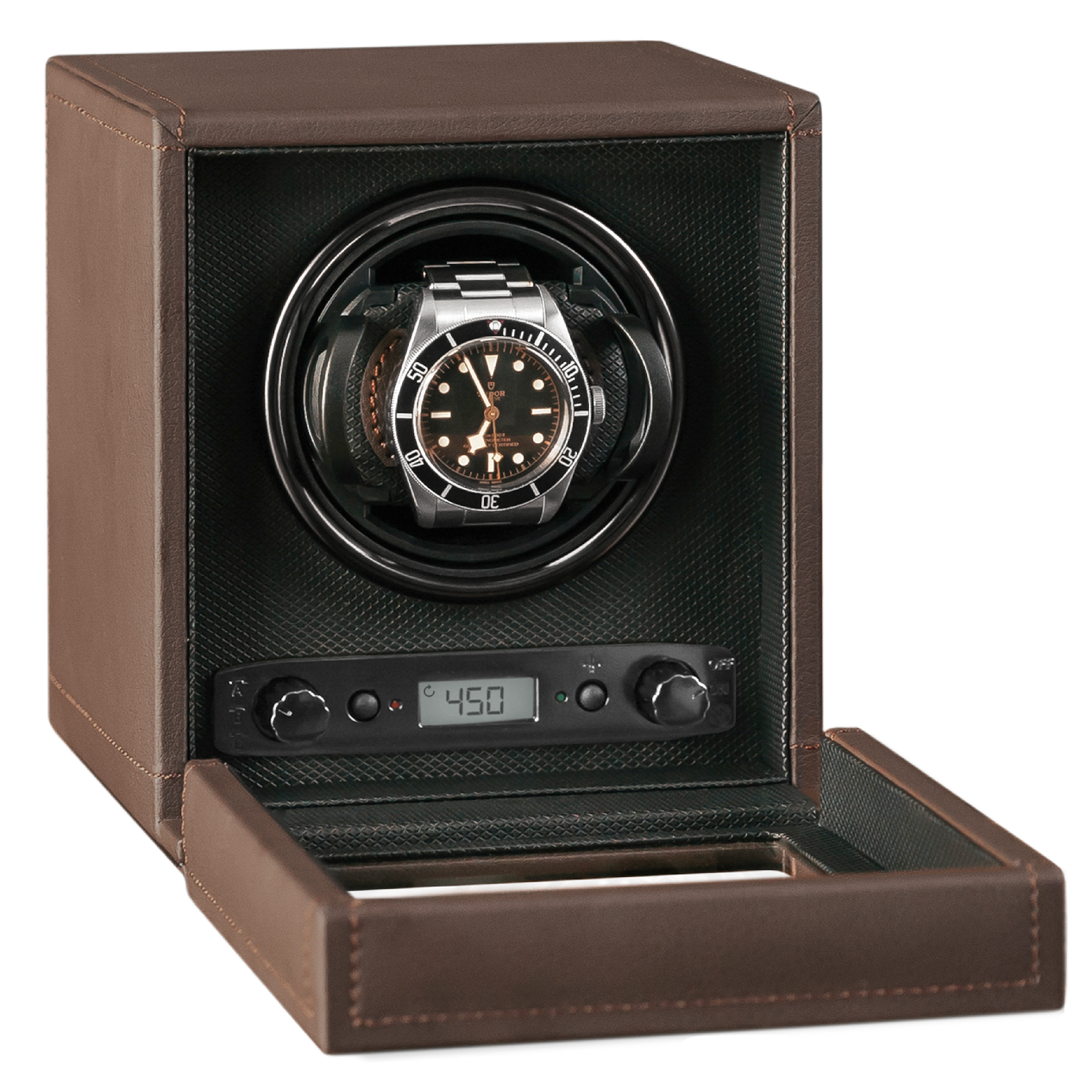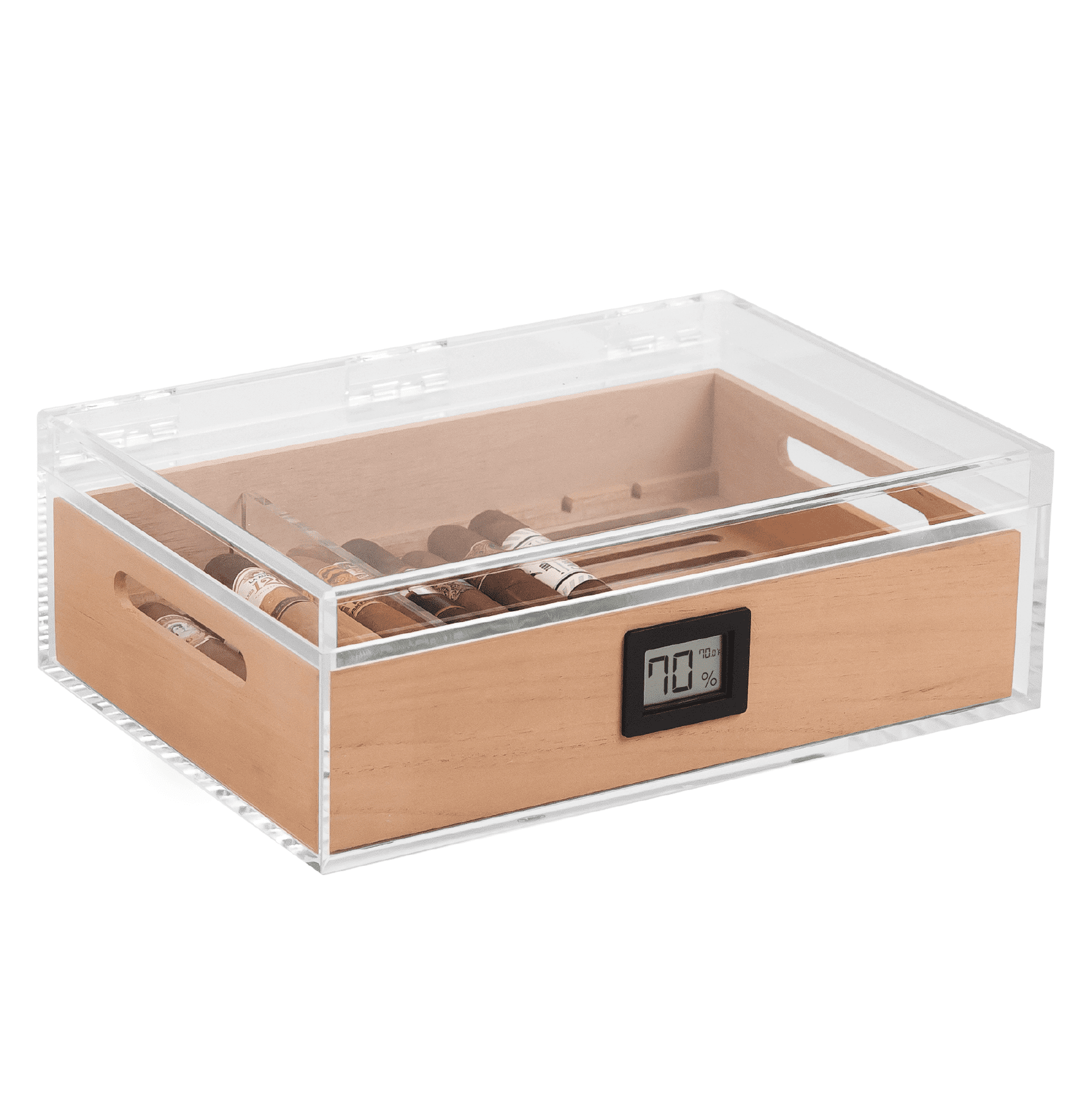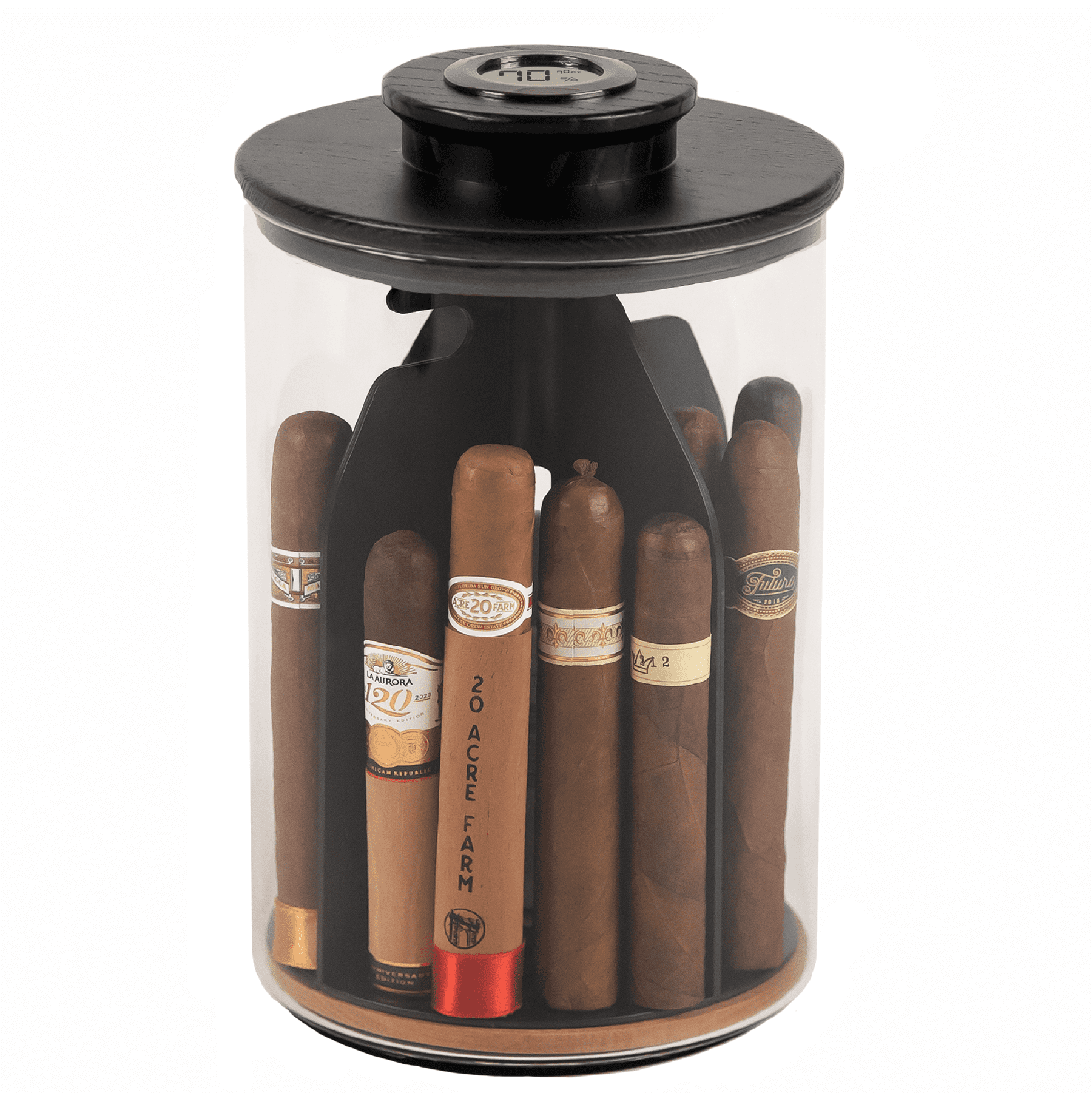The beauty of a good cigar is often in its complexity—its nuance. Premium cigars create an olfactory experience worth paying attention to. To achieve this requires masterful blending and proper construction, and the best manufacturers have this down to an art form. The problem? Cigars are pretty temperamental. Delicate, say. Store them incorrectly, and the whole thing goes to pot. You should store cigars in a humidor, but even that doesn’t assure their protection. Do you know how to stack cigars in a humidor?
Your humidor should offer enough space to fit your entire collection without overfilling your unit. But there’s a bit more strategy involved to ensure your cigars stay at the right humidity and flavors don’t blend or become compromised.
Understanding Humidors

First, why a humidor? For storing cigars, there is no better-suited choice than a dedicated humidor. Correctly prepared and seasoned, humidors create and maintain the ideal environment for storing tobacco, which is approximately 68%-72% humidity. More humid than this, and cigars can develop mold. Less humid, and they dry out and crack.
While humidors can be made of many different materials and components, the best humidors are built with Spanish cedar in the interior, have an air-tight seal, and include a humidification element, like humidor solution or gel crystals. These three elements are critical to achieving and maintaining the right humidity level for your cigars.
A few common humidor types include:
-
Desktop Humidors - Medium-sized humidors that can fit anywhere from 25-300 cigars (approximately).
-
Travel Humidors - Small, hand-held humidors designed to store cigars for a short amount of time, typically when traveling.
For each of these humidor types, the necessary components are the same: Spanish cedar, a humidification source, and a good seal. With these components, a humidor can achieve the ideal humidity level for storing cigars. Whether you live in a humid or dry climate, your humidor can maintain an independent zone of ideal humidity.
Preparing Your Humidor

The basic function of a humidor is this: the Spanish cedar absorbs and releases humidity to maintain an equilibrium. When your humidor becomes too humid, the Spanish cedar absorbs some of that humidity, preventing your cigars from molding or becoming soggy. When the air becomes too dry, it releases that humidity, creating a humidity buffer so that your cigars are not at risk of drying out.
Before stocking it with cigars, you will need to season your humidor. This means you need to saturate the cedar with humidity. Doing so effectively bolsters your Spanish cedar to have enough moisture stored in the wood to release when dry cigars are stocked.
Seasoning your humidor is a fairly straightforward process. We’ve prepared specific humidor seasoning guides to season each Klaro humidor. But you can also learn how to season your humidor with a more general guide.
Now, all Klaro humidors use a humidor solution and gel crystal based humidification system. But there are other humidification types.
But you will need an accurate hygrometer in your humidor to measure humidity levels accurately to know if your humidification system is working properly and your cigars are protected.
Selecting Cigars for Your Humidor
Once you have a seasoned humidor, you’re ready to start building your cigar collection. The cigars you choose to store should be based on your taste profile interests. But there are a few other factors to remember as you purchase and begin to store cigars when it comes to selection.
Cigars come in many varieties, but all types generally are made with three main parts: a wrapper, binder, and filler. Different tobacco leaves are used for each part. And different strains of tobaccos are used depending on the type of cigar and the manufacturer.
You should familiarize yourself with cigar types to know what you prefer from a taste profile perspective and also so you know how to store them in your humidor. We will discuss this more, but cigar wrappers can be especially oily and this can pass to other cigars if not stored properly.
When buying cigars, inspect them to ensure they are in good condition to start out. Your humidor can help restore partially dried out cigars, but you should prioritize quality cigars from the get-go.
Below are a few tips to help choose good cigars and avoid those that are dried out.
- Inspect for any visible cracks in the cigar wrapper. A crack should immediately void any cigar.
- Use the pinch test and feel for any soft spots. The cigar should be firm with some give.
- Hold the cigar close to your ear, lightly pinch the cigar and listen for any cracking that might occur inside due to dried out tobacco leaves.
- Smell the foot of the cigar. Avoid anything that has a high ammonia smell or anything that is musty-smelling.
A good cigar will often be slightly oily on the wrapper and should feel consistent throughout. You might also look for “toothy” cigars.
As you begin to grow your cigar collection, you need to have a plan for storing cigars properly.
Storing Cigars Properly

When storing cigars, there are a few concerns we need to address. See, if you simply toss new cigars into your humidor as you buy them, you risk potentially damaging them, exposing them to unwanted oils, flavors, and odors, or forgetting which cigars are new or old (or what they are altogether).
Humidor organization requires thoughtful strategy. It’s not complicated, but simply requires some foreknowledge before you begin.
For example, horizontal and vertical stacking are two common ways to store your growing cigar collection. Stacking can help maximize space and store more cigars, but do not restrict airflow or stack cigars so that the weight pushes on those at the bottom, potentially damaging them.
Depending on the type of humidor you have, storing your cigars vertically may allow you to store more cigars without risking crushing cigars that would otherwise lay on top of one another. Typically, you would stand them with the foot down.
Horizontal stacking, on the other hand, may help create additional airflow when placed in a single layer. Airflow will allow them to remain fresh. When layering cigars horizontally, consider using cedar dividers to keep them separated. This will prevent cigars without cellophane from passing oils to the other cigars.
As your cigar collection grows, you will understand the benefit of utilizing shelves or trays in your humidor. For example, the Klaro Military humidor features a movable wooden tray that keeps some cigars elevated from the others. This is especially important if you are storing any flavored cigars that may pass on to the others. Your cigar arrangement should prevent flavored cigars from storing next to regular cigars.
Maintaining Humidity Levels

Once you begin storing a higher number of cigars, the humidity in your humidor may be affected. Like adding ice to a tub of lukewarm water, the state of the cigars you add to your humidor will affect the humidity. Most of the time, adding cigars will cause the humidity to go down as the additional cigars absorb moisture.
As mentioned, the ideal humidity range for cigars in a humidor is 68%-72%. You will need to closely observe your hygrometer to catch any significant changes in humidity.
Humidors typically come standard with a digital or analog hygrometer. We highly recommend digital hygrometers built with rubber gasket seals. Analog hygrometers are notoriously inaccurate. Furthermore, while many humidor makers advertise a digital hygrometer, you need to ensure a tight seal to ensure an accurate reading.
If your humidor becomes too humid, there are strategies to lower the humidity in a humidor. For example, you may need to simply lift the lid for a predetermined duration. Conversely, a humidor that is too dry will require adding a humidifying agent, such as additional humidor solution or a humidor pack.
Organizing Your Collection
We highly recommend developing a system for storing your cigars. The reasons are simple: you don’t want to forget which cigars are in your humidor and how long a cigar has been stored.
We recommend, at the very least, maintaining a written list of your cigars. A simple spreadsheet with the names of the cigars and the dates they were added will suffice. There are, however, cigar apps for your phone that will help you track and organize your cigar collection.
Here’s a simple but important concept to keep in mind as you store cigars: the closer the cigar to the humidification source, the more humidity it will be exposed to. That’s why periodically rotating your cigars is the best method to ensure they maintain a good moisture equilibrium.
We recommend rotating your cigars every few weeks. For larger collections, every month or two will do. Other cigar placement techniques exist, but we highly recommend rotation above all others.
Common Mistakes to Avoid
Overfilling your humidor can prevent it from working correctly. It’s important that your humidor maintains a certain amount of open air space to properly circulate humidity. We don’t recommend filling your humidor more than 70% for an extended period.
Humidors may require re-seasoning, especially if you have not performed maintenance recently by adding solution. Re-seasoning is very similar to seasoning, with the purpose of re-saturating the cedar with moisture.
You may be tempted to try to wet the wood manually to saturate additional moisture, but we do not recommend this strategy and it could cause warping of the wood.
Wrapping Up
Owning and maintaining a robust cigar collection is one of the benefits of cigar smokers. It’s a hobby, it’s an art, it’s a science. The more you do it, the more you will learn and the fewer issues you’ll have with your cigars. Done right, you can age certain cigars to improve or alter their flavor profiles, but the basics come first. Happy storing, happy smoking!



